Disconnect the ECM connector (A).
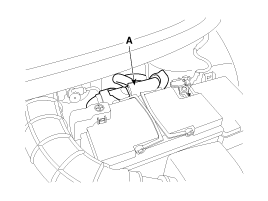
After replacing the ECM or injectors, the injector specific data (7 digits) of each cylinder should be entered into a new ECM memory using GDS.
If the vehicle is equipped with the immobilizer, the procedure below should be performed after replacing the ECM.
[In the case of installing used ECM]
Perform "ECM Neutral mode" procedure using GDS.
(Refer to Body Electrical System - "Immobilizer")
Perform "Key teaching" procedure using GDS.
(Refer to Body Electrical System - "Immobilizer")
[In the case of installing new ECM]
Perform "Key teaching" procedure using GDS.
(Refer to Body Electrical System - "Immobilizer")
If the vehicle is equipped with the smart key system (Button start), the procedure below should be performed after replacing the ECM.
[In the case of installing used ECM]
Perform "ECM Neutral mode" procedure using GDS.
(Refer to Body Electrical System - "Smart Key System")
Turn the ignition ON / OFF by pressing the start button with the smart key. Then the ECM recognizes the smart key information automatically.
[[In the case of installing new ECM]
Turn the ignition ON / OFF by pressing the start button with the smart key. Then the ECM recognizes the smart key information automatically.
Turn ignition switch OFF and disconnect the negative (-) battery terminal.
Disconnect the ECM connector (A).

Remove the air intake hose.
Unscrew the ECM mounting bolts (B) and remove the ECM and bracket (A).
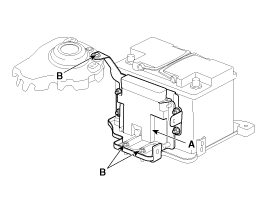
Remove the ECM after loosening the mounting nuts (A).
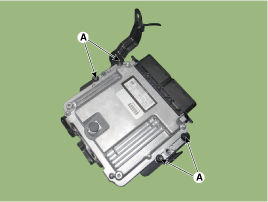
Install the ECM in the reverse order of removal.
ECM bracket mounting bolt / nut :
9.8 ~ 14.7 N.m (1.0 ~ 1.5 kgf.m, 7.2 ~ 10.8 lb-ft)
ECM mounting nut:
7.8 ~ 11.8 N.m (0.8 ~ 1.2 kgf.m, 5.8 ~ 8.7 lb-ft)
TEST ECM GROUND CIRCUIT: Measure resistance between ECM and chassis ground using the backside of ECM harness connector as ECM side check point. If the problem is found, repair it.
TEST ECM CONNECTOR: Disconnect the ECM connector and visually check the ground terminals on ECM side and harness side for bent pins or poor contact contact pressure. If the problem is found, repair it.
If problem is not found in Step 1 and 2, the ECM could be faulty. If so, replace the ECM with a new one, and then check the vehicle again. If the vehicle operates normally then the problem was likely with the ECM.
RE-TEST THE ORIGINAL ECM : Install the original ECM (may be broken) into a known-good vehicle and check the vehicle. If the problem occurs again, replace the original ECM with a new one. If problem does not occur, this is intermittent problem (Refer to INTERMITTENT PROBLEM PROCEDURE in BASIC INSPECTION PROCEDURE)
Connect the battery negative (-) terminal.
Perform the "ECM Change" procedure using GDS.
Turn the ignition switch OFF.
Connect the GDS to Data Link Connector (DLC).
Turn the igntion switch ON.
Select "Vehicle, Model Year, Engine, System".
Select "Vehicle S/W Management".
Select "Component Change Routine".
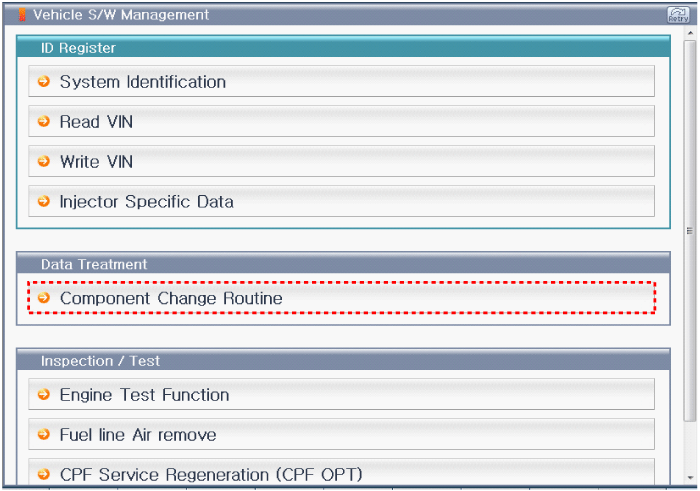
Select "ECU Change".
Input the mileage in the cluster.
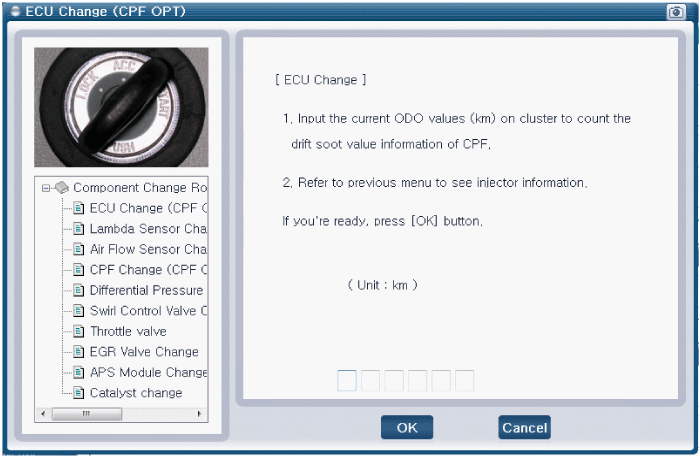
If the confirm message appears, turn the ignition switch OFF and wait for 20 seconds. And then turn the ignition switch ON.
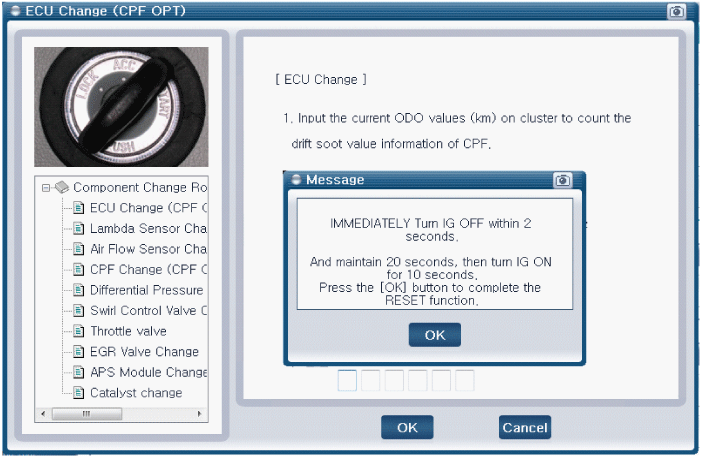
Perform "Injector Specific Data Input" procedure.
(Refer to Engine Control/Fuel System - "Injector")
Perform "Key Teaching" procedure.
(Refer to Engine Control/Fuel System - "Immobilizer")